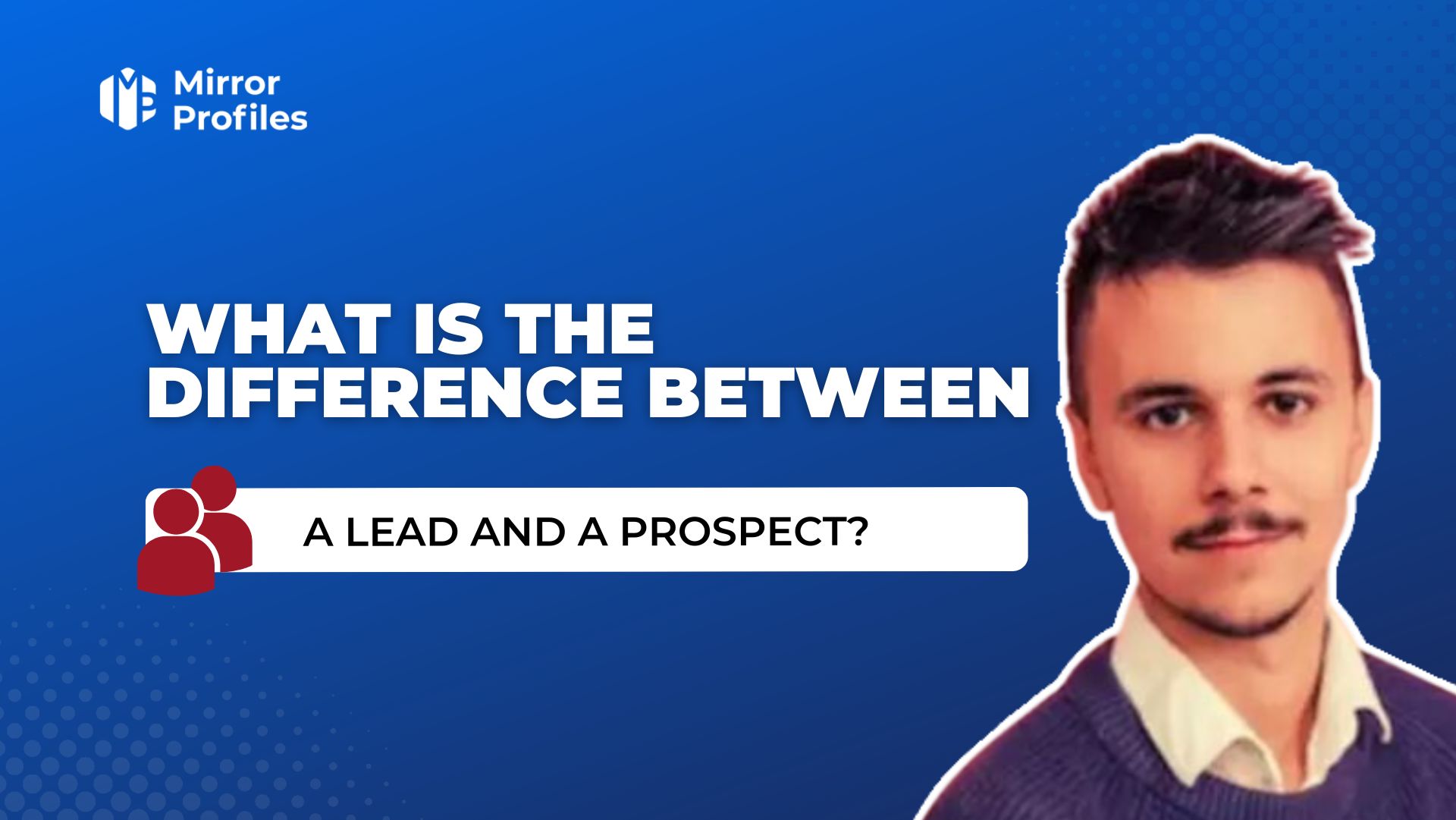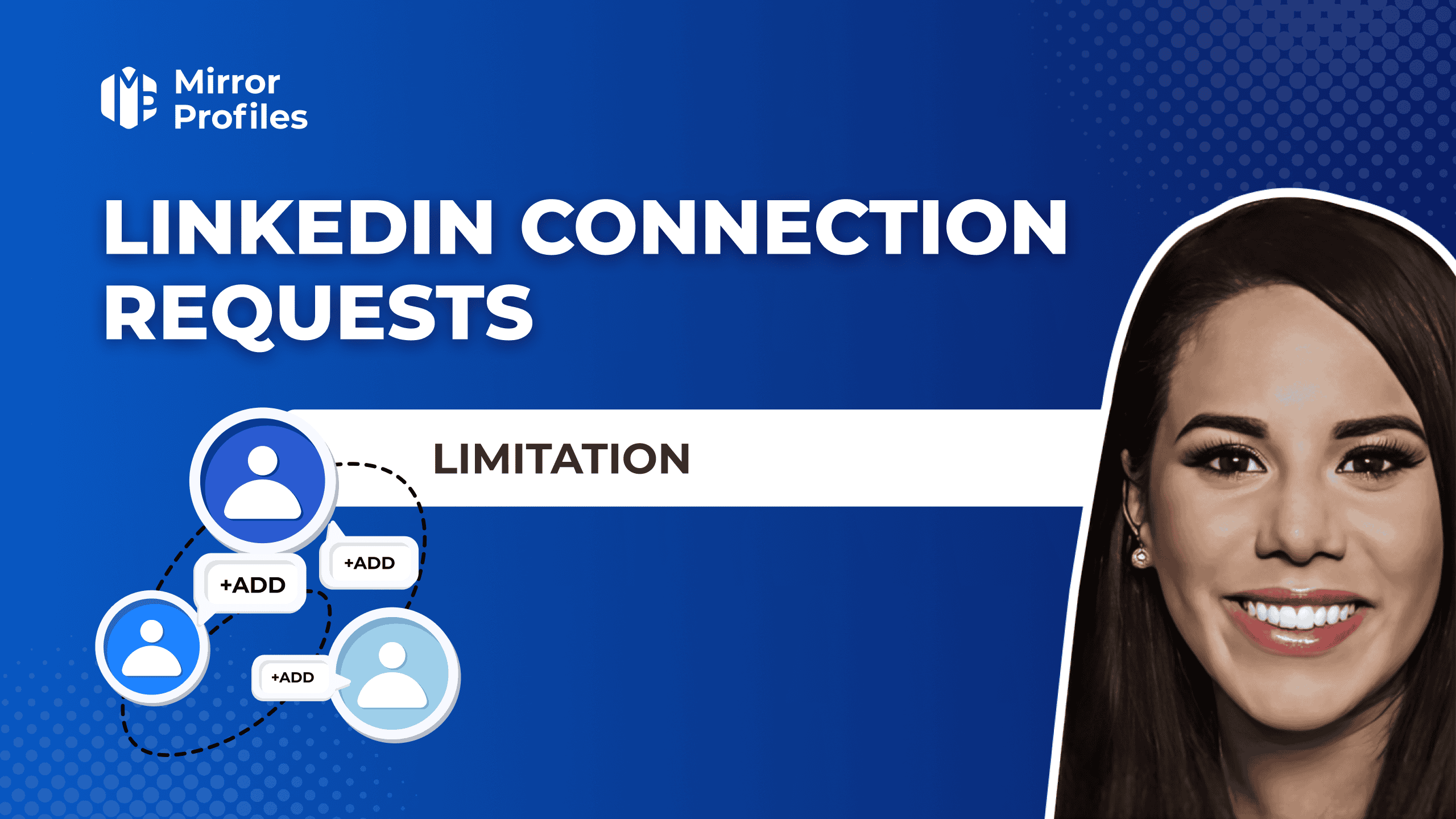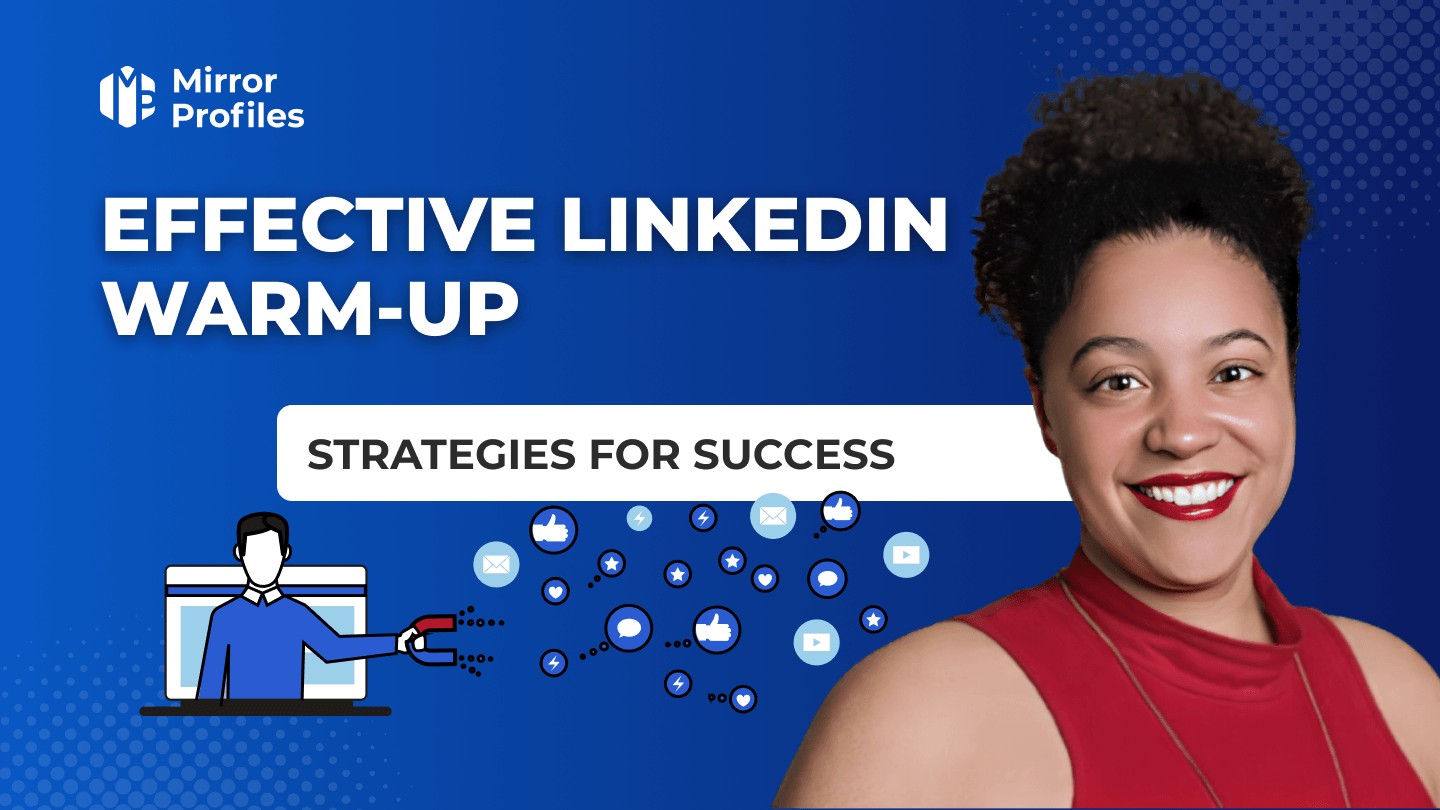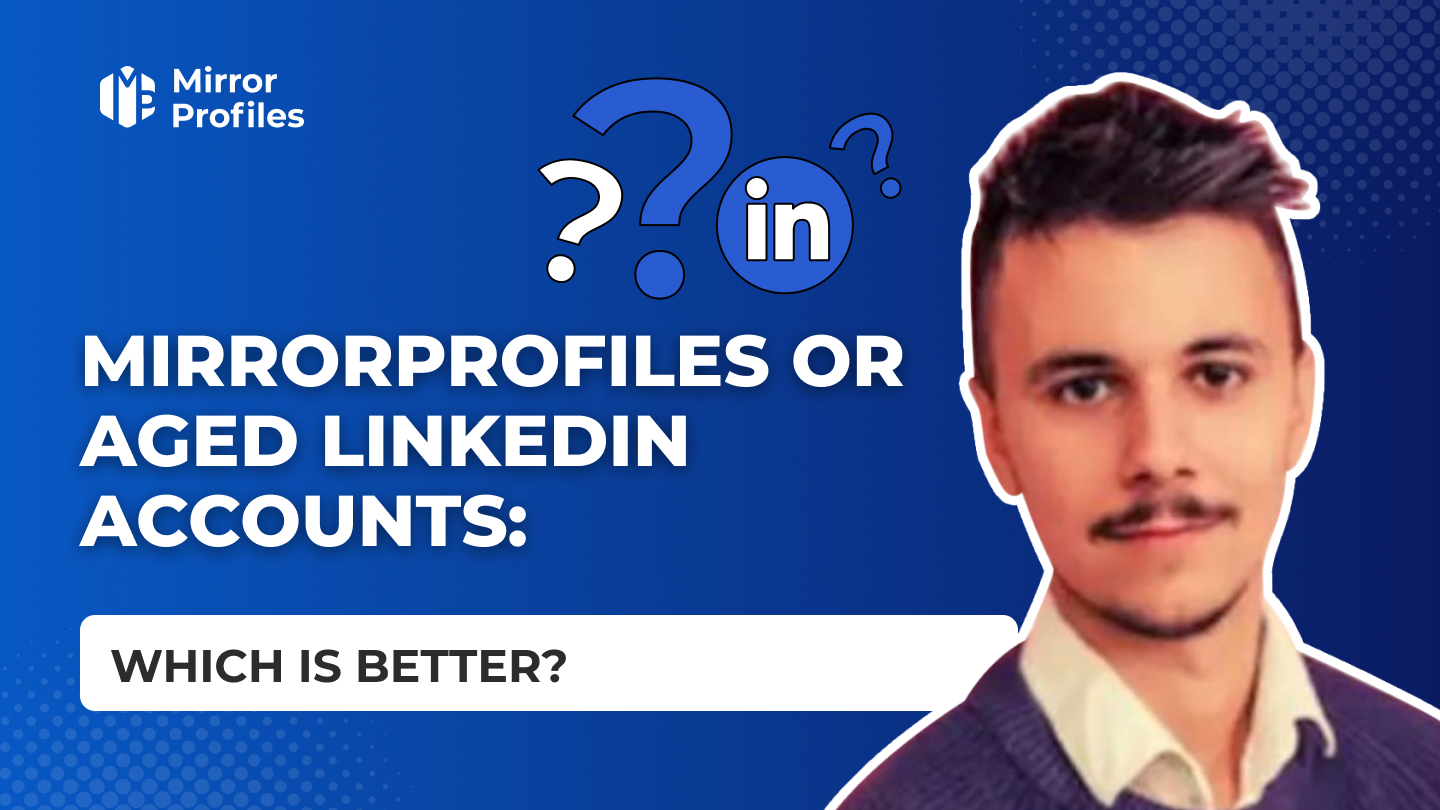Introduction
Identifying the right contacts and turning them into loyal customers is a crucial skill for any business. We often hear terms like prospecting or lead generation, but the two methods are different and complementary. The first is designed to generate leads, and the other, as the name suggests, to generate prospects.
The notion of “prospect” takes on its full meaning. But what is a prospect, and why is he so important to your sales strategy? How can you effectively transform these valuable prospects into qualified leads ready to take action? Furthermore, how to use linkedin for prospecting? Let’s dive into prospecting and discover together the keys to maximizing your sales potential and guaranteeing your company’s growth.
What is a Prospect?
A prospect can be considered as a qualified contact. The qualification process determines whether the contact corresponds to the ideal profile defined by the company. Quite simply, it’s the company’s target. If this is the case, the contact takes on the status of “prospect”, and the sales rep can then propose the products or services that best meet the prospect’s specific needs and expectations, in the hope of turning him or her into a customer.
For example, if you run a SalesNavigator Linkedin search based on your customer portfolio, then anyone who looks like your customer is a prospect for you.
In B2B (Business to Business) activities, one of the main missions of salespeople is to turn prospects into leads.
What is a Lead?
A lead is an individual or a company that has expressed curiosity about the proposals you offer. This is a prospect who has expressed an interest in your product or service. This mark of attention can take many forms, such as visiting your website, filling in a contact form, subscribing to a newsletter, downloading a white paper, taking part in a webinar or even responding positively to a prospecting message.
For example, let’s say you’re a supplier of project management software. A visitor to your website who downloads a white paper on “Best practices in project management” is a lead. He showed a keen interest in project management, and therefore potentially in your software.
It’s important to note that not all leads are ready to make a purchase immediately. They’re usually at the beginning or middle of their buying journey, and need to be educated and convinced about the benefits of your offer. That’s why lead nurturing, or the art of maintaining a relationship with your leads, is an essential component of any successful marketing and sales strategy.
In short, a lead is a valuable contact who has the potential to become a customer, but who requires carefully-tailored support and education to help him or her progress along the buying journey. Lead nurturing and lead segmentation are key tools for maximizing the value of your leads and increasing your sales.
How do you convert a prospect into a lead?
Converting a prospect into a lead is a key stage in the sales process. It involves nurturing the prospect, educating them about your offers, and determining whether they have a high purchasing power. Here are a few steps and strategies to help you convert your leads into prospects:
- Launch prospecting campaigns via Linkedin: in particular by using our MirrorProfiles accounts you can increase the number of prospects contacted per week. 1 Linkedin account = 100 connection requests per week. So logically, the more Linkedin accounts you have, the more leads you’ll generate.
- Segmentation: Segmenting leads means dividing them into groups according to their characteristics and behavior. This allows you to personalize your interactions and provide each lead with the content and information they need to move forward in their purchasing journey.
- Lead Nurturing: This is the process of maintaining the relationship with your leads, by providing them with relevant content and engaging them in conversations. This can take many forms, such as sending personalized emails, offering educational content (like blog posts or webinars), or arranging telephone appointments.
- Scoring: This is a method for assessing the level of interest and commitment of each prospect. This enables you to determine which prospects are most likely to become leads, and focus your efforts on them. Lead scoring can be based on demographic criteria (such as industry sector or company size), or behavioral criteria (such as the number of pages viewed on your website or the number of emails opened).
- Qualification: Prospect qualification is the process of determining whether a prospect is ready to be passed on to the sales team for active sales action. . If a prospect responds positively to these criteria, he or she is considered a lead and passed on to the sales team.
- Follow-up and optimization: The process of converting a prospect into a lead is rarely perfect the first time. That’s why it’s important to monitor your results, identify areas for improvement, and optimize your strategy accordingly. This may mean adjusting your segmentation, scoring or lead qualification.
Not all leads are created equal. Some may be more interested in your offers than others, or may have a higher purchasing power. This lead score can be automated using our CRM: MirrorCRM.
In short, turning a prospect into a lead involves nurturing them, educating them about your offers, and determining whether they have a high purchasing power. Lead segmentation, lead nurturing, lead scoring, lead qualification, follow-up and optimization are key steps and strategies for making this transformation a success.
How can MirrorProfiles help you convert prospects into leads?
To succeed in this transformation, it’s essential to have the right tools and strategies in place. That’s where MirrorProfiles comes in.
MirrorProfiles is a high-end Linkedin account rental service dedicated to B2B prospecting, enabling you to increase your prospecting volumes, verticalize your accounts, protect your personal LinkedIn account, and retain your leads. Here’s how MirrorProfiles can help you turn your leads into prospects:
- Increase your prospecting volumes: If you have several Linkedin MirrorProfiles accounts, you can exceed Linkedin quotas and contact as many people as possible! You can implement software to automate your prospecting by sending invitations and messages on LinkedIn. This enables you to increase your prospecting volumes, and reach a greater number of potential leads. The more prospects you reach, the greater your chances of turning them into leads.
- Verticalize your accounts: MirrorProfiles accounts let you create and manage multiple LinkedIn accounts, each specialized in a particular industry or lead type. This allows you to verticalize your accounts, and provide each prospect with the content and information they need to move forward in their buying journey. This increases your chances of conversion.
- Protect your personal LinkedIn account: MirrorProfiles lets you prospect with dedicated LinkedIn accounts, not your personal account. This allows you to protect your personal account from being banned from the platform, and to continue prospecting without interruption. This also allows you to separate your prospecting activity from your personal activity on LinkedIn, and maintain a professional image.
- Keep your leads: You can keep your relationships and any leads you’ve converted into leads. MirrorCRM lets you store and manage your leads in a dedicated database, and synchronize them with your CRM. This means you can keep your leads, even if you stop using MirrorProfiles, and continue to nurture and educate them.
A prospect is a qualified contact who corresponds to the ideal profile defined by the company, thus becoming the main target for sales efforts. The aim is to turn these prospects into leads by offering them products or services tailored to their needs. Turning prospects into leads, who have shown a concrete interest in the company’s offerings, is essential in the sales process, especially in B2B. A customer was always before a lead, and still before a prospect.
Successful conversion requires strategies such as segmentation, lead nurturing, scoring and lead qualification. MirrorProfiles facilitates this process by offering dedicated LinkedIn accounts for prospecting, increasing contact volumes, protecting personal accounts, and enabling efficient lead management.
In short, mastering the art of converting prospects into leads is crucial for any company seeking to optimize sales and growth.





